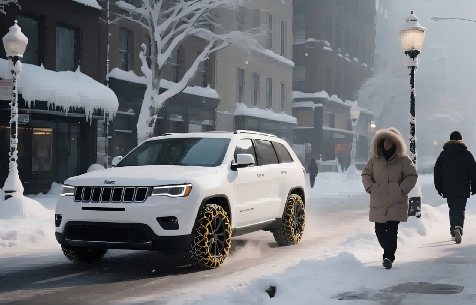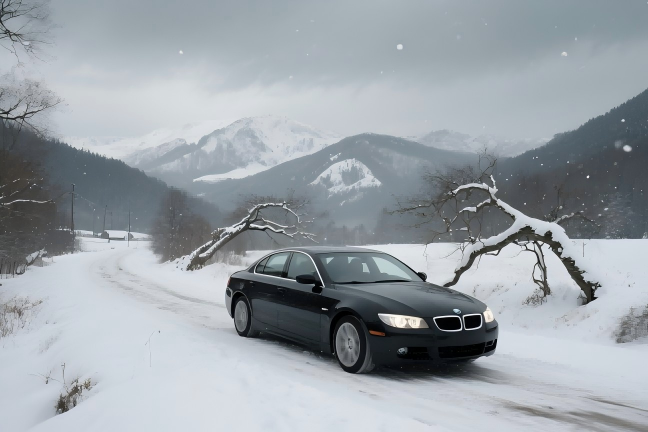Date:2025-07-08
Winter Car Starting Guide: How to Choose the Right Battery and Beat the Cold
Cold Starts - How Cars Struggle in Freezing Temperatures
A cold start happens when trying to start a car engine after it's been sitting in freezing weather. The oil thickens, the starter motor needs more power, and the battery must deliver a huge burst of electricity.
Extreme Weather Challenges
- Oil problems: At -30°F (-34°C), regular oil can become 10 times thicker, making the engine harder to turn.
- Battery issues: Lead-acid batteries may lose 40-50% of their power in cold weather. Even lithium batteries weaken (like LFP batteries keeping only 70% capacity at -4°F/-20°C).
- Fuel trouble: Gasoline doesn't vaporize easily when cold, requiring more pressure to start properly.
Real-world examples:
- In Alaska or Siberia, drivers often need engine heaters (like Webasto diesel heaters) or battery warmers - even top batteries can fail without them.
- Some Nordic countries require battery monitoring systems that automatically turn off non-essential electronics in extreme cold.
Understanding CCA Ratings
- What CCA really means: It measures how many amps a 12V battery can deliver at 0°F (-18°C) while staying above 7.2 volts.
- Watch out for:
- Cheap batteries that claim high CCA but can't maintain voltage (dropping below 7.2V in seconds).
- The -18°C test doesn't reflect extreme cold like -40°F/C - check real-world performance data.
Old battery limitations:
- Electrolyte can freeze (though lead-acid battery fluid usually stays liquid below -94°F/-70°C).
- New tech solutions:
- Calcium alloy grids reduce power loss and improve cold performance.
- PowerFrame designs (like in Delphi batteries) boost efficiency, giving 15% better cold starts.
Choosing the Right Battery for Gas Cars
Pick your battery based on climate, engine size, and type - here's what matters most:
Climate & Engine Needs
Weather matters:
- Cold areas (-4°F to -22°F/-20°C to -30°C): Get ≥650 CCA (Canada, Northern Europe).
- Extreme cold (<-22°F/-30°C): Need ≥800 CCA (Siberia, Greenland).
- Mild climates (>32°F/0°C): 400-500 CCA works, but short trips can damage batteries.
Engine differences:
- Turbo engines need 10-20% higher CCA than regular engines.
- Diesel trucks require 30-50% more starting power - AGM batteries work best (like BMW's factory choice).
Battery Type Comparison
| Type | CCA Range | Cold Performance | Lifespan | Cost | Best For |
|---|---|---|---|---|---|
| Regular Lead | 300-500A | Poor (loses 60% at -4°F/-20°C) | 2-3 yrs | $ | Hot climates |
| AGM | 600-800A | Great (keeps 75% at -22°F/-30°C) | 4-6 yrs | $$$ | Luxury/start-stop cars |
| EFB | 500-700A | Good (85% at -4°F/-20°C) | 3-5 yrs | $$ | Budget cold weather |
| Lithium | 500-700A | Excellent (70% at -40°F/C) | 5-8 yrs | $$$$ | High-end vehicles |
Top picks:
- AGM: Varta L3 (760 CCA at -22°F), ACDelco Gold (special carbon formula).
- EFB: Camel 6-QW-60 (680 CCA, slow self-discharge).
- Lithium: Wiltson Energy(Low-temperature battery Factory), Tesla Powerwall (home compatible), Amperex 12V (for start-stop).
Pro Tips
- Test yearly: Use a CCA tester (like AutoMeter 2401) before winter.
- Pre-warm: Below -4°F (-20°C), use a battery warmer (OptiMate 4 charger has built-in heating).
EVs vs Gas Cars: Cold Weather Differences
Electric and gas vehicles handle winter starts completely differently:
Starting Comparison
| Feature | Electric Cars | Gas Cars | Key Difference |
|---|---|---|---|
| Response | Instant torque even at -22°F (-30°C) | Slow crank (especially diesels) | EVs don't "warm up" |
| Power Source | 300-800V main battery | 12V battery + starter | EVs use one battery system |
| Cold Effects | 30-50% range loss | Harder to start | EVs trade range for reliability |
Battery Tech Advances
For EVs:
- Self-heating: BYD Blade batteries warm up in 3 minutes (-22°F to 32°F).
- Smart heating: Tesla Model Y's heat pump recycles warmth for the cabin and battery.
- Better chemistry: CATL's new electrolyte works better in cold.
For gas cars:
- Smart chargers: CTEK MXS 5.0 keeps batteries at optimal voltage in winter.
- Dual batteries: Big trucks (Volvo FH16) use a backup battery just for starting.
Real User Stories
- Norway: A Tesla Model 3 owner preheated his battery via app at -31°F (-35°C) and started perfectly.
- Canada: A Ford F-150 diesel owner switched to Battle Born 24V lithium batteries and improved cold starts by 90%.
Performance Summary
| Category | EVs | Gas Cars | Winner |
|---|---|---|---|
| Reliability | High (no moving parts) | Medium (depends on battery) | EVs |
| Range Impact | Big (30-50% loss) | Small (just when starting) | Gas |
| Maintenance | Low (no oil changes) | High (regular replacements) | EVs |
The bottom line:
- Best for extreme cold: EVs win if you have chargers nearby (like Norway's 80% EV adoption). Gas cars still rule for long trips.
- Future tech: Gas cars may switch to 48V systems (like Mercedes' new engines) for easier starts.
Recommend
2025-10-03
Cold Weather Lithium Battery Guide: Performance, Chemistry, and Best Practices
2025-09-30
Advantages of Low Temperature Batteries: Reliable Power for Cold Weather Applications
2025-09-26
Ah Meaning, Watts, Amps, and Volts Explained for Lithium Ion Batteries
2025-09-23
FAQ: Can 2AWG Wire Connect a 12V 100Ah Battery?



